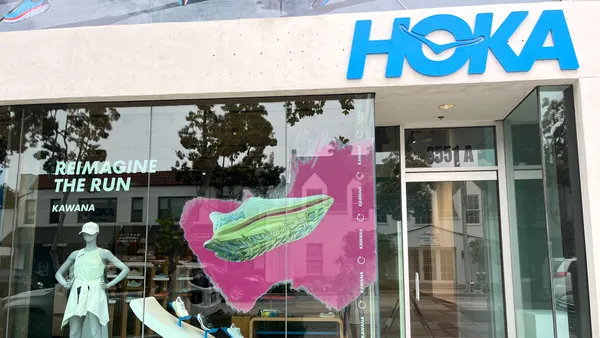Dive Brief:
-
During the five-day shopping weekend, from Thanksgiving through Cyber Monday, a record 189.6 million U.S. shoppers went to stores and retail websites, 14% more than last year, according to a report from the National Retail Federation and Prosper Insights & Analytics released on Tuesday.
-
Some 124 million shopped in stores and 142.2 million online, while 75.7 million did both, according to the report. Black Friday was the busiest day for stores (84.2 million shoppers), followed by Small Business Saturday (59.9 million), Thanksgiving Day (37.8 million), Sunday (29.2 million) and Cyber Monday (21.8 million), the NRF said. But, for the first time, Black Friday (93.2 million shoppers) also beat Cyber Monday (83.3 million) as the busiest digital day as well.
-
Those shopping both channels spent at least 25% more, or an average $366.79, the NRF said. Consumers spent an average $361.90 on holiday items over the five-day period, 16% more than last year. Of that, $257.33, or 71%, actually went to gifts. The biggest spenders were 25- to 34-year-olds at $440.46, followed by those 35-44 at $439.72.
Dive Insight:
Despite some signs that shoppers started their holiday shopping earlier this year, Thanksgiving weekend launched the retail season as it usually does and broke some records in the process.
Some shoppers — about 39% — are holding out for better deals later in the season. But consumers told NRF that they finished a little over half of their shopping over the weekend, up from 44% last year. The popularity of the red-letter event endures, despite earlier NRF research finding that 56% had begun their shopping as of the first week of November.
With six fewer days to shop, U.S. consumers may have been eager to take advantage of their time off to get things done. "With the condensed holiday season, consumers are feeling the pressure to get their shopping done in time," NRF President and CEO Matthew Shay said in a statement. "Even those who typically wait until the last minute to purchase gifts turned out in record numbers all weekend long.”
While it's easy to lament that department stores have tamped down their holiday cheer compared to their heyday, NRF found they were the top destination over the weekend. Half of those surveyed said they visited a department store, followed by 36% who went to apparel retailers, 34% who went to grocery stores, 32% who went to electronics stores and 29% who went to discount stores.
Those shopping for gifts went for apparel (58%), toys (33%), electronics (31%), books, music, movies or video games (28%) and gift cards (27%), according to the report.
As with reports from Adobe, Salesforce and others, NRF found mobile shopping significantly increased this year, with 75% of shoppers using devices to research products, compare prices or buy, up from 66% last year. And like others, NRF and Prosper researchers found that shoppers are interested in heading to the store to grab their online orders. Being able to do that was cited by 20% of those surveyed (up from 15% last year) as something that would spur a purchase they might otherwise pause over. Other motivations were discounts (36%) and an easy-to-use website or app (21%). But "free shipping was the biggest reason for shoppers to make a purchase they were otherwise hesitant about, cited by 49 percent, up from 42 percent last year," according to the report.
The complexity and expense of online fulfillment, whether delivery or BOPIS, are challenges for retailers. But the NRF study and others suggest that e-commerce has become a boon for many brick-and-mortar retailers, and not just Amazon or other pure-players.
"The growth in online retail sales is a tide that lifts everybody," Prosper Executive Vice President of Strategy Phil Rist said in a statement. "When consumers are buying from retailers online but picking up or making returns in-store, it is more and more difficult to distinguish between the sales retailers make in their stores and the ones they make on their websites."












